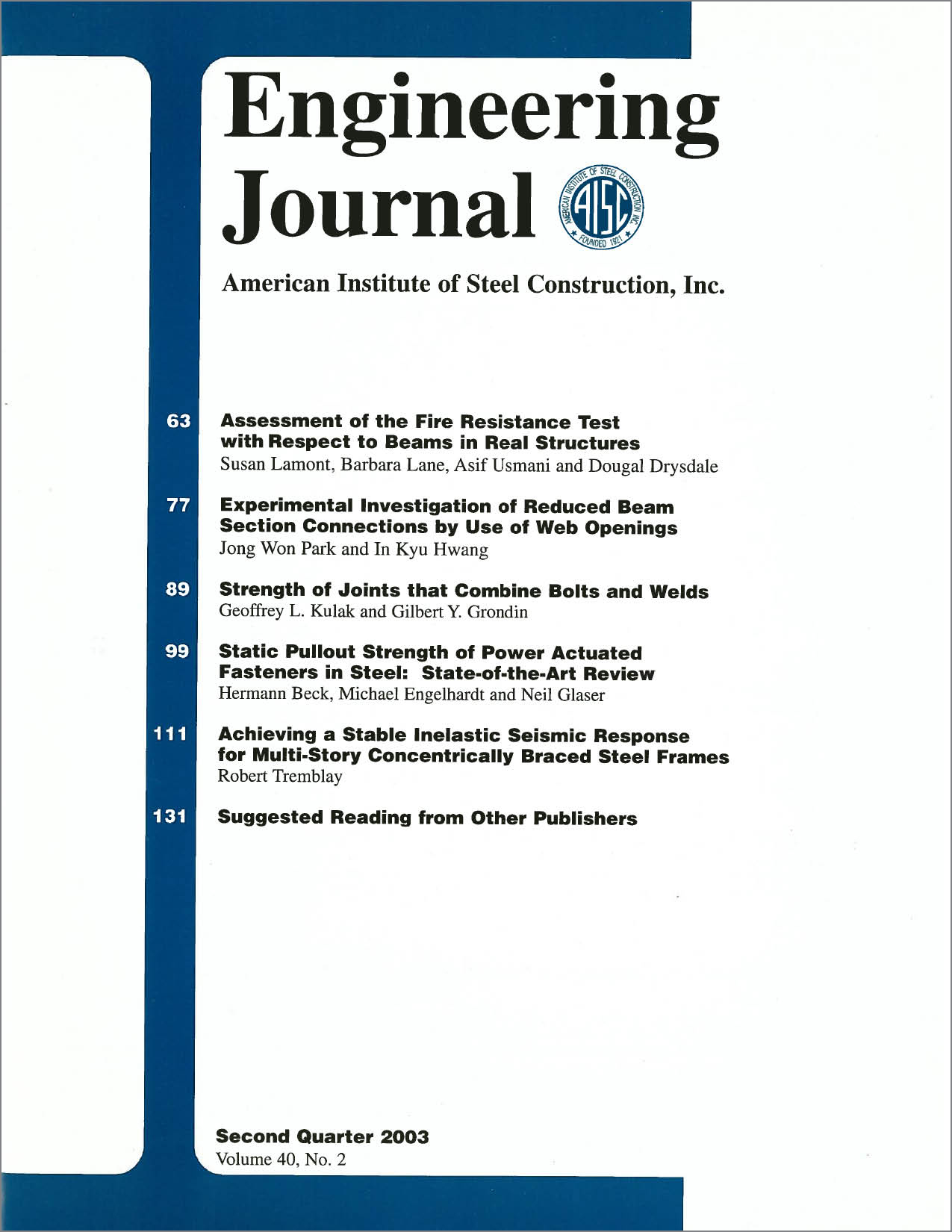Assessment of the Fire Resistance Test with Respect to Beams in Real Structures
DOI:
https://doi.org/10.62913/engj.v40i2.806Abstract
Historically fire resistance design of structures has been based upon single element behavior in the standard fire resistance test. Engineers have always recognized that whole frame structural behavior in fire cannot be described by a test on a single element. However, it is only in relatively recent years since the Broadgate phase 8 fire (SCI, 1991) and the subsequent Cardington frame fire tests that researchers have fully nvestigated and understood the behavior of whole structures in response to fire. The University of Edinburgh in collaboration with Imperial College and Corus (formally British Steel) have played a major role in this field of research through the UK Department of Environment and Transport in the Regions (DETR), Partners in Technology (PiT) project. Significant progress towards a complete understanding of the structural behavior of highly redundant composite steel frames in fire has been achieved (Edinburgh University, 2000). It has been shown that the fire resistance test has little relevance to the behavior of structural elements as part of highly indeterminate structures typical of modern, composite steel frame buildings. The test methods are particularly inadequate when the end conditions during service are unknown and the beam is tested as simply supported, i.e. no consideration of restraint is made. By including the effect of restraint in a simple beam model the temperature at which "runaway" occurs is greatly increased. The reasons for this, i.e. the changing load-carrying mechanisms involved as catenary action develops as a result of the deflected shape have also been explained.

